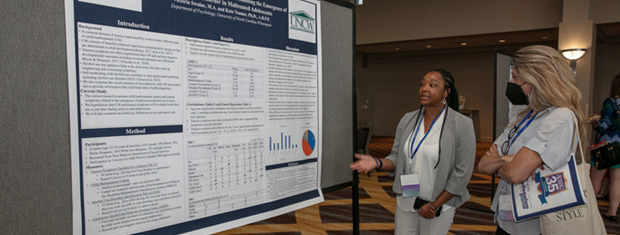




The APSAC Advisor is a peer reviewed quarterly news journal for professionals in the field of child abuse and neglect.
The APSAC Advisor provides succinct, data-based, practice-oriented articles that keep interdisciplinary professionals
informed of the latest developments in policy and practice the field of child maltreatment. It is designed to highlight
best practices in the field and publish original articles and current information about child maltreatment for professionals
from a variety of backgrounds including medicine, law, law enforcement, social work, child protective services, psychology,
public health and prevention in the U.S.
 If you wish to learn more about submitting an article to the Advisor, please click here.
If you wish to learn more about submitting an article to the Advisor, please click here.
This library contains Advisor issues dating back to the first issue in 1988. The most recent issue appears at the top.
Scroll down to select past issues by year and issue number. Once a publication appears in the box, you
can use the Enlarge button to open the document in a new window or tab (depending on how your browser is set up).
This will allow you to view the document with larger print.
To print a document, first use the Enlarge button to open the document in a new window or tab. Then use your browser's Print command.
To return here from a new tab, close the tab. To return from a new window, click your browser's Back button.
In the listing below, click on a year and issue number to see the articles in that publication.
1993 Number 2
This article describes some of the important therapeutic principles which may prove of use to clinicians working with traumatized children, These principles arise from understanding the underlying core pathophysiology and psychology of the acute, immediate and persisting 'alarm' reaction in the developing child.
Enhancing Children’s Resistance to Misleading Questions During Forensic Interviews
In recent years, there has been a growing trend in cases of child sexual abuse to fault those who perform forensic interviews of children for their use of improper interview techniques and questions.
The Doctrine of Family Reunification: Child Protection or Risk?
The prevailing child welfare doctrine in cases of child abuse and neglect is to provide short-term protection for maltreated children but to work to- ward long-term reunification for children with their families.
Classification of Anogenital Findings in Children With Suspected Sexual Abuse: An Evolving Process
Medical professionals who evaluate children for suspected sexual abuse are usually asked to render an opinion as to whether the child's examination is normal or abnormal, and whether the findings are consistent with the child's description of the abuse (when available).
The purpose of Journal Highlights is to alert readers to current literature on child abuse. Selected articles from journals representing the variety of disciplines reflected in APSAC's membership are presented in the form of an annotated bibliography.
APSAC Advisor 6(2): Full Issue